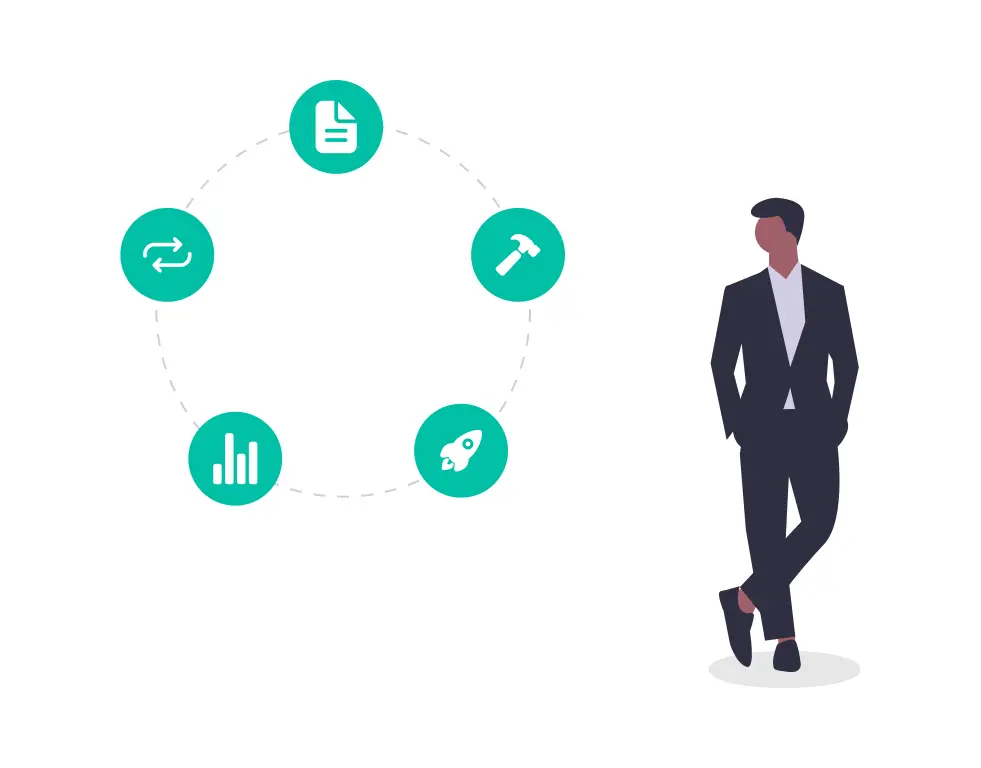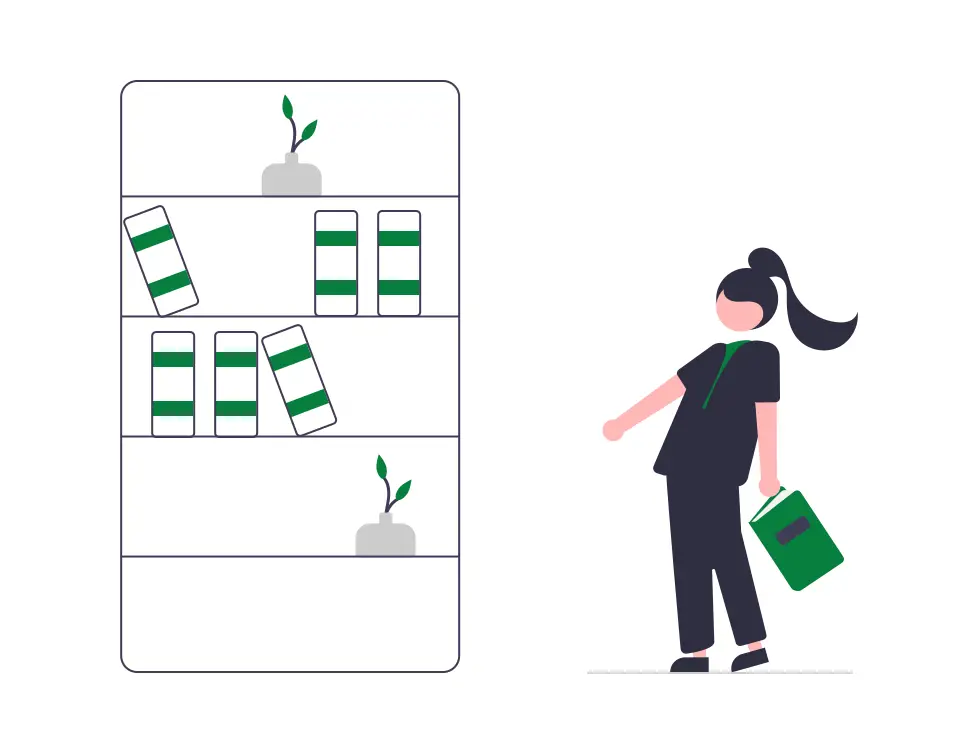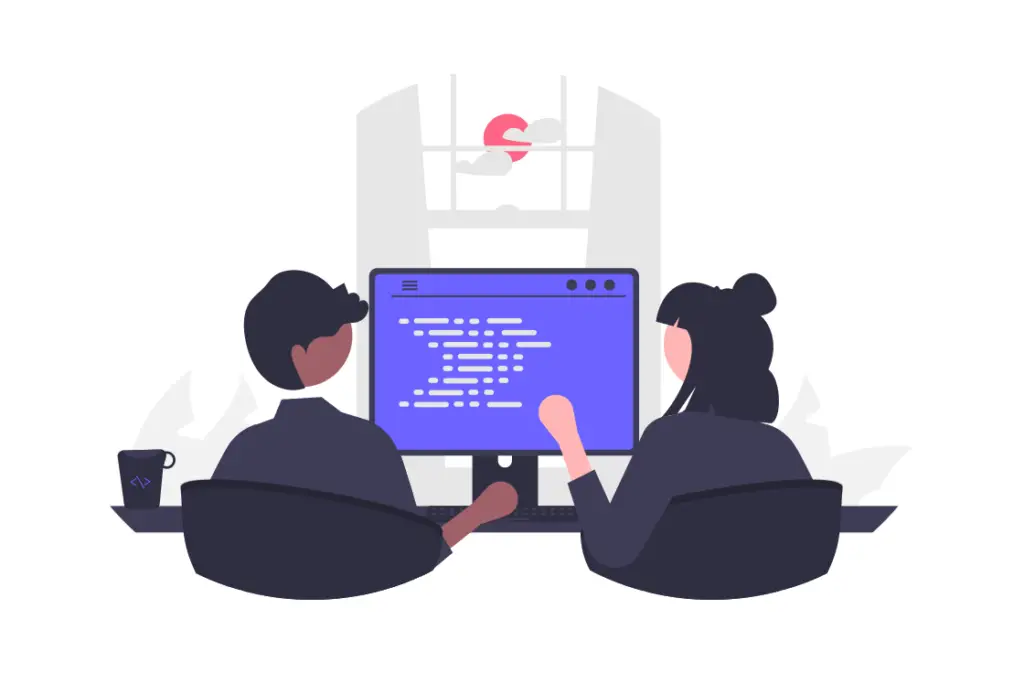When embarking on a programming project alone, I find myself grappling with a host of challenges.
Limited perspectives, restricted expertise, and the potential for burnout are just a few of the obstacles that may hinder my coding progress.
Without the synergy of a team, finding solutions and addressing complex issues becomes a solitary task.
Additionally, the absence of feedback and diverse insights can result in suboptimal outcomes, as my knowledge and experiences might be limited within a specific domain.
In today’s fast-paced world of software development, teamwork and collaboration have become indispensable.
I mean, I cannot work on a large project alone. I will get a very uekin burnout that would prolly take me a couple of ego-lifted shots at my local bar.
What I mean in short is that, as projects grow larger and more complex, the need for multiple programmers to work together efficiently becomes paramount.
And that begs the question…
Do computer programmers work together?
Computer programmers often work together in collaborative projects. Collaboration allows for diverse expertise, improved problem-solving, and efficient code development. Teamwork enables programmers to leverage each other’s strengths, share knowledge, and deliver high-quality software solutions.
Let’s look at what collaborative programming is, some example approach to collaborative programming, and the benefits it offers.
What is collaborative programming?
Collaborative programming, also known as team programming or pair programming, refers to the practice of multiple programmers working together on a software development project.
It involves sharing tasks, knowledge, and responsibilities to collectively create robust and efficient code.

Recognizing the limitations of working alone, programmers have embraced collaborative approaches to maximize efficiency and foster innovation.
However, this collaborative landscape presents its own set of challenges.
Coordination, communication, and code integration can become intricate puzzles to solve.
Ensuring that multiple programmers can work seamlessly on the same project, sharing their expertise and contributing effectively, requires thoughtful strategies and a robust framework.
All in all,
Why is collaboration important for software engineers?
Collaboration is a cornerstone of success in the field of software engineering.
It involves multiple programmers working together on a project, pooling their skills, knowledge, and expertise.
The collaborative approach brings numerous benefits, including:
I. Collaboration improves coding skills and knowledge sharing
Collaboration among software engineers provides a valuable opportunity for improving coding skills and facilitating knowledge sharing within a team.

Here’s how this benefit unfolds:
Skill Enhancement through Collaboration
When programmers collaborate, they have the opportunity to learn from each other’s expertise and experiences.
By working together on a project, team members can share coding techniques, problem-solving strategies, and best practices.
This exchange of knowledge and skills helps enhance individual coding abilities and broadens the collective skill set of the team.
Exposure to Different Perspectives and Approaches
Collaborating with fellow programmers exposes individuals to different perspectives and approaches to coding.
By observing and understanding how others solve problems and tackle challenges, team members can expand their repertoire of coding techniques.
This exposure to diverse coding styles and methodologies fosters growth and allows individuals to incorporate new ideas into their own coding practices.
Continuous Learning Environment
Collaboration creates a dynamic and continuous learning environment.
Team members can engage in discussions, code reviews, and knowledge sharing sessions, actively contributing to their professional development.
Through these interactions, individuals can stay updated with the latest industry trends, technologies, and coding practices, fostering a culture of ongoing learning within the team.
Immediate Feedback and Improvement
Collaborative coding provides opportunities for immediate feedback from peers.
Code reviews and discussions allow team members to identify areas for improvement, spot potential bugs or inefficiencies, and suggest enhancements.
This constructive feedback loop enables programmers to iteratively improve their coding skills and produce higher-quality code.
II. Collaborative programming speeds up the development process

Collaborative programming brings multiple programmers together to work on a project simultaneously, resulting in a significant acceleration of the development process.
It achieves that by:
- Division of Labor: By distributing tasks among team members based on their skills and expertise, collaborative programming allows for parallel development. Different aspects of the project can be worked on simultaneously, reducing the overall time required to complete the work.
- Efficient Problem Solving: With multiple programmers collaborating, complex problems can be tackled more efficiently. Team members can brainstorm solutions, share insights, and leverage their diverse perspectives to arrive at optimal solutions faster. This collaborative problem-solving approach eliminates potential bottlenecks and accelerates progress.
- Concurrent Testing and Debugging: Collaborative programming facilitates simultaneous testing and debugging activities. While one team member is coding, another can be testing the code or identifying and fixing bugs. This concurrent approach to testing and debugging helps identify issues earlier in the development cycle, saving time that would otherwise be spent on later-stage bug fixing.
- Continuous Integration and Deployment: Collaborative programming often incorporates continuous integration and deployment (CI/CD) practices. This means that as individual code changes are made and tested, they can be seamlessly integrated into the main codebase and deployed for further testing or production. This streamlined process allows for rapid feedback loops and ensures that new features or fixes are available to users quickly.
- Rapid Iteration and Feedback: Collaboration enables rapid iteration and feedback cycles. As team members work together, they can quickly iterate on ideas, review each other’s work, and gather feedback. This iterative approach promotes faster progress, as changes and improvements can be implemented in real-time, reducing the need for extensive rework later on.
III. Pair programming lead to the production of high-quality code
Collaborative programming promotes code review and continuous feedback.
This iterative process helps identify and rectify errors, ensures adherence to coding standards, and improves the overall quality of the codebase.
Consequently, the end product is more reliable, maintainable, and less prone to bugs.
IV. Enhances communication skills and practice
Collaborative programming inherently requires effective communication among team members.

By engaging in collaborative projects, software engineers have the opportunity to develop and enhance their communication skills.
Here’s why this benefit is significant:
- Clear and Effective Communication: Collaborating with other programmers necessitates clear and concise communication to convey ideas, requirements, and project updates. Through regular interactions, team members learn to articulate their thoughts and ideas effectively, ensuring that everyone is on the same page.
- Active Listening and Understanding: Collaborative programming fosters active listening, where team members attentively listen to others’ perspectives, feedback, and suggestions. This practice promotes better understanding of different viewpoints, leading to more comprehensive problem-solving and decision-making.
- Conflict Resolution and Negotiation: In collaborative settings, conflicts and disagreements may arise. By engaging in open discussions and negotiations, software engineers can develop skills in conflict resolution. They learn to address differences of opinion constructively, find common ground, and reach mutually beneficial solutions.
- Interpersonal Skills and Teamwork: Collaborative programming projects provide opportunities for software engineers to develop strong interpersonal skills and enhance their ability to work effectively as part of a team. They learn to navigate team dynamics, delegate tasks, and foster a positive and collaborative work environment.
- Documentation and Clarity: Effective communication also extends to documenting project details and updates. Software engineers improve their skills in creating clear and concise documentation, ensuring that information is easily accessible and understandable for all team members.
V. Pair programming leads to the production of effective solutions
Pair programming is a collaborative practice where two programmers work together on the same task, sharing a workstation.
This approach offers several benefits, one of which is the production of effective solutions.
- Enhanced Problem Solving: When two programmers work together, they can combine their knowledge, skills, and problem-solving approaches. This collaborative effort often leads to more comprehensive and well-thought-out solutions. By leveraging each other’s strengths, they can tackle complex problems with a higher degree of effectiveness.
- Real-Time Feedback and Quality Assurance: Pair programming allows for continuous feedback and code review throughout the development process. As one programmer writes the code, the other can review it in real-time, catching potential issues and suggesting improvements. This immediate feedback loop promotes code quality and reduces the likelihood of introducing errors or bugs.
- Improved Code Readability and Maintainability: With pair programming, code is written with the intention of being read and understood by two individuals. This emphasis on clarity and readability results in code that is easier to maintain and modify in the future. It reduces the reliance on a single programmer’s understanding, increasing the overall resilience of the codebase.
- Knowledge Sharing and Skill Development: Pair programming provides an opportunity for knowledge sharing and skill development between team members. As they collaborate, they exchange ideas, techniques, and best practices, enhancing their individual capabilities and expanding their programming knowledge. This mutual learning process strengthens the team’s collective skill set and promotes professional growth.
- Reduced Rework and Faster Problem Resolution: With two programmers actively involved in the development process, issues and challenges can be identified and resolved more quickly. Discussions and debates during pair programming sessions often lead to a deeper understanding of the problem domain and help avoid potential pitfalls. This results in reduced rework, as problems are addressed early on, leading to faster overall progress.
By pooling together the skills and knowledge of multiple programmers, collaborative programming leverages diverse perspectives and expertise.
Different team members may have strengths in different areas, leading to more comprehensive problem-solving and innovative solutions.
VI. Collaboration in an organization keeps programmers satisfied in their jobs
Collaboration in an organization plays a crucial role in keeping programmers satisfied in their jobs.
When programmers have opportunities to collaborate effectively, it leads to several benefits that contribute to their job satisfaction.
- Sense of Belonging and Teamwork: Collaboration fosters a sense of belonging and teamwork among programmers. Working together towards common goals promotes a supportive work environment where team members feel valued and appreciated. This sense of camaraderie and shared purpose enhances job satisfaction.
- Professional Growth and Skill Development: Collaborative environments provide opportunities for programmers to learn from their peers, exchange knowledge, and expand their skill sets. Through collaboration, programmers can gain insights into different approaches, techniques, and technologies, fostering continuous professional growth. This access to learning and development opportunities positively impacts job satisfaction by promoting personal and career advancement.
- Shared Problem Solving and Innovation: Collaborative programming encourages shared problem-solving and innovative thinking. By leveraging the collective intelligence and diverse perspectives of the team, programmers can find creative solutions to complex challenges. This shared problem-solving approach fosters a sense of accomplishment, fulfillment, and pride in their work, contributing to higher job satisfaction.
- Reduced Isolation and Support: Collaboration mitigates the risk of isolation and provides support to programmers. When faced with difficulties or roadblocks, collaborating with teammates allows programmers to seek assistance, share responsibilities, and benefit from collective expertise. This support network creates a positive work environment that helps alleviate stress and enhances job satisfaction.
- Recognition and Appreciation: Collaboration often involves recognizing and appreciating the contributions of individual programmers within a team. When programmers’ efforts and achievements are acknowledged and celebrated, it boosts morale and job satisfaction. The sense of being valued and appreciated for their contributions contributes to a positive work atmosphere.
The result of collaborative programming setup are enormous.
In summary, the benefits of pair programming are:
| Benefits | Description |
|---|---|
| Diverse Expertise | Multiple programmers bring different skills and perspectives. |
| Improved Efficiency | Parallel work and task division accelerate the development process. |
| Enhanced Code Quality | Code review and continuous feedback result in higher-quality code. |
| Efficient Problem-Solving | Collaboration enables innovative solutions to complex challenges. |
| Knowledge Sharing and Learning | Team members learn from each other, expanding their skill sets. |
By adopting collaborative programming, teams can harness the collective intelligence and skills of their members, leading to more efficient, high-quality software development.
This approach fosters innovation, enhances problem-solving capabilities, and enables seamless teamwork within programming projects.
Now that you have all the opportunities that collaborative programming presents, how can you create an effective programming team?
How does a programming team work?
A programming team operates as a cohesive unit, combining individual skills and expertise to achieve shared project goals.
In a programming team, each member is assigned specific roles and responsibilities based on their expertise.

For example, a team may have a project manager, software architect, front-end developer, back-end developer, and quality assurance specialist.
By clearly defining roles, team members can focus on their areas of strength, enhancing productivity and avoiding overlap or confusion.
As an example:
At Company X, I worked on, during the development of a web application, the programming team consisted of a project manager, three developers, and a tester.
The project manager oversaw the overall progress, while the developers worked on different modules.
The tester conducted thorough quality checks to ensure a bug-free final product.
For a software engineering team to work effectively, it needs an effective communication system too.
Communication lies at the heart of successful programming team collaboration.
Regular and transparent communication channels are crucial for sharing ideas, discussing progress, and addressing challenges.
Utilizing tools like project management software, chat platforms, and video conferencing ensures seamless information exchange.
For my company example, Team Y, working remotely across different time zones, relied on Slack for instant messaging, Zoom for video meetings, and Trello for project tracking.
By using these tools, they maintained consistent communication, enabling smooth coordination despite geographical barriers.
Another key aspect that leads to effective team collaboration is the development workflow:
A well-defined development workflow streamlines the team’s efforts, ensuring efficient task management and smooth progress.
Common approaches include Agile methodologies like Scrum or Kanban, which divide work into manageable iterations and emphasize frequent feedback and adaptation.

During development, Team Y also adopted the Scrum framework, holding daily stand-up meetings to discuss progress and challenges.
They used a project board, such as Jira or Trello, to track tasks, prioritize them in sprints, and visualize the overall project timeline.
Finally, an effective collaborating team cannot work well without a versioning system or simply a simply where each team member can access the code files easily and without hassle.
Version control systems, such as Git, play a vital role in programming team collaboration.
These tools allow team members to work on code simultaneously, track changes, merge modifications, and resolve conflicts efficiently.
Collaboration platforms like GitHub or Bitbucket facilitate shared code repositories and provide a centralized hub for code review and collaboration.
By incorporating these key elements into their workflow, programming teams can foster effective collaboration, harness individual strengths, and deliver successful projects.
In the next section, we will dive deeper into the practice of pair programming and explore strategies for its effective implementation.
Effective Collaborative Programming: How to organize and manage a team of coders?
When multiple programmers come together to work on a project, effective organization and management play a vital role in ensuring a smooth and successful collaboration.

Let’s explore practical strategies and best practices for organizing and managing a team of coders.
Determine the team size based on development type
When organizing a collaborative programming project, it is crucial to determine the appropriate team size based on the development type.
The size of the team can significantly impact the project’s efficiency, communication, and overall success.
Let’s explore how team size considerations align with different development team types.
Small Development Teams:
In certain cases, a small development team consisting of two to five members can be highly effective, especially for small-scale projects or rapid prototyping.
Small teams facilitate quick decision-making, streamlined communication, and a greater sense of individual ownership.
With fewer members, it becomes easier to align on project goals, ensure cohesive collaboration, and maintain a high level of coordination.
Medium Development Teams:
For more complex projects, a medium-sized development team, typically ranging from six to fifteen members, is often appropriate.
Medium teams allow for a broader range of expertise and specialization, enabling efficient task distribution and workload management.
Communication within a medium-sized team requires careful attention to ensure everyone is informed and aligned.
Effective coordination and clear channels of communication are essential to avoid redundancy and maintain project coherence.
As an example:
Let’s consider a scenario where a software development company is working on building a mobile application.
For this project, a small development team of three members might be suitable.
The team includes a mobile app developer, a UX/UI designer, and a quality assurance specialist.
With their collective expertise, they can efficiently cover the development, design, and testing aspects of the project.
Large Development Teams:
Large development teams, typically consisting of sixteen or more members, are commonly found in extensive enterprise-level projects.
These teams provide an opportunity to leverage diverse skill sets and expertise.
However, managing large teams requires robust organizational structures and communication frameworks to avoid confusion and maintain productivity.
Clearly defined roles, effective delegation of tasks, and efficient communication channels become paramount for success in large-scale projects.
For a large-scale enterprise software development project, a team of fifteen members could be necessary.
This team may consist of front-end developers, back-end developers, database administrators, quality assurance engineers, project managers, and business analysts, among others.
The larger team size allows for specialization in various areas, ensuring comprehensive coverage of the project requirements.
Distributed or Remote Teams:
With the rise of remote work and distributed teams, it’s essential to consider the challenges and advantages of working across geographically dispersed locations.
Remote teams allow for access to talent globally, but effective communication and collaboration become even more critical.
Proper utilization of collaboration tools, regular video conferencing, and asynchronous communication methods are essential to bridge the physical distance and maintain a cohesive team dynamic.
By carefully considering the development type and its corresponding team size requirements, project managers can create a well-balanced and efficient collaborative programming team that is tailored to the specific needs of the project.
Next, let’s talk about allocating roles.
Define Roles and Responsibilities
Start by clearly defining roles and responsibilities for each team member.
Assigning specific tasks based on individual expertise fosters efficiency and accountability.
For instance, one programmer may specialize in front-end development, while another may excel in back-end coding.
By leveraging these unique skills, the team can work in harmony towards the project’s goals.
Assigning roles clarifies individual responsibilities, avoids confusion, and maximizes efficiency.
When team members have defined roles, they can focus on their areas of expertise, resulting in higher quality work.
Role assignment also promotes accountability and ensures that all necessary tasks are covered, leaving no gaps in the project.
Here are the
Different Roles in a Programming Project that are common among most projects
- Project Manager: Responsible for overall project coordination, task delegation, and ensuring timely delivery. They facilitate communication, manage resources, and handle potential roadblocks.
- Front-End Developer: Specializes in creating user interfaces, focusing on the visual aspects, user experience, and client-side functionality using languages like HTML, CSS, and JavaScript.
- Back-End Developer: Focuses on server-side programming, handling data storage, processing, and business logic. They work with languages such as Java, Python, or Ruby, and frameworks like Node.js or Django.
- Full-Stack Developer: Proficient in both front-end and back-end development, capable of handling various aspects of the project. They bridge the gap between the user interface and server-side functionality.
- Quality Assurance (QA) Engineer: Responsible for testing and ensuring the quality and functionality of the software. They perform automated and manual tests, identify bugs, and provide feedback to the development team.
- Database Administrator (DBA): Manages the database system, including data organization, performance optimization, and data security.
- DevOps Engineer: Handles infrastructure setup, deployment automation, and continuous integration/continuous deployment (CI/CD) processes. They ensure smooth collaboration between development and operations teams.
These roles are identified based on each individual expertise from their curriculum vitae or expertise.
When assigning responsibilities, consider each team member’s expertise and strengths.
Leverage their skills to maximize productivity and output quality.
For example, assign front-end tasks to developers with strong UI/UX design skills, while assigning database-related responsibilities to a DBA.
Also, effective communication is crucial when assigning roles and responsibilities.
Clearly communicate project needs, objectives, and expectations to the team members.
This ensures a shared understanding and alignment, avoiding misunderstandings or duplication of efforts.
By assigning roles, understanding the different roles commonly found in programming projects, aligning responsibilities based on expertise, and maintaining clear communication, teams can establish a strong foundation for successful collaboration.
Establish Communication Channels
Open and effective communication is crucial for a cohesive programming team.

How do I communicate effectively with my team members during a collaborative project?
Utilize communication tools like Slack, Microsoft Teams, or project management software to facilitate real-time collaboration.
Create dedicated channels for discussions, updates, and issue tracking.
Regularly scheduled meetings and stand-ups can keep everyone aligned and informed about project progress.
Adopt Version Control Systems (VCS) or any type of file distribution
Multiple programmers work on the same project at the same time by using:
Close interaction coding sessions
Multiple programmers working on the same project simultaneously often employ close interaction coding sessions to facilitate real-time collaboration and enhance productivity.

In this approach, team members come together physically or virtually and actively code together, sharing screens and discussing implementation details.
By leveraging close interaction coding sessions, programmers can benefit from immediate feedback, collective problem-solving, and accelerated knowledge transfer.
For example, imagine a team of programmers working on developing a web application.
They schedule a close interaction coding session where they gather in a conference room equipped with a large screen or use collaborative coding tools.
During the session, they work on a specific feature or module of the project together.
One programmer takes control of the keyboard while others provide input and suggestions.
As they code, they discuss design decisions, code structure, and potential optimizations.
They can quickly address doubts, resolve conflicts, and brainstorm ideas on the spot.
This close interaction allows for instant collaboration and prevents miscommunication or misunderstandings that may arise when working individually.
Additionally, close interaction coding sessions enable the transfer of knowledge and skills among team members.
Junior programmers can learn from more experienced colleagues in real-time, gaining insights into best practices, coding techniques, and problem-solving strategies.
This active learning environment fosters skill development and accelerates the onboarding process for new team members.
By utilizing close interaction coding sessions, multiple programmers can leverage their collective expertise, improve code quality, and foster a sense of camaraderie within the team.
It promotes efficient collaboration, minimizes delays, and enables the project to progress smoothly while benefiting from the diverse perspectives and skills of each team member.
When you are not in close proximity at most of the programming sessions, you ca leverage the power of VCS tools such as the popular Git.
team management tools such as VCS and file distribution tools
Implementing a version control system, such as Git, is essential for seamless collaboration.
VCS allows team members to work on the same codebase simultaneously, manage changes, and merge contributions efficiently.
Branching and merging workflows enable programmers to work on features independently before integrating them into the main codebase.
To track code changes across all team members, it is essential to utilize version control systems.
Examples of such systems include distributed Git, Mercurial, and centralized Subversion.
And,
What is the difference between centralized and distributed version control systems?
In a centralized system like Subversion, there is a single central repository where all code changes are stored.
Developers check out files from this central repository, make modifications, and then commit their changes back to the central server.
On the other hand, in a distributed system like Git or Mercurial, every developer has a local copy of the entire codebase, including the full version history.
This enables developers to work independently, creating branches, committing changes, and merging them locally.
These local repositories can then be synchronized with others, allowing for a decentralized workflow.
In short, centralized version control systems rely on a single central repository, while distributed systems provide local repositories for each team member, offering greater flexibility and autonomy in code development and collaboration.
What are the benefits of using version control systems?
Version Control Systems (VCS) have revolutionized the way software development teams collaborate and manage code.
By providing a structured approach to tracking changes, coordinating contributions, and maintaining code integrity, VCS has become an indispensable tool for programmers worldwide.
Here are the benefits of using VCS during collaborative programming:
- History Tracking: VCS allows programmers to track and store every change made to the codebase, creating a comprehensive history. This feature enables easy identification of who made specific changes, when they were made, and why they were made. It facilitates debugging, code review, and reverting to previous working versions if needed.
- Concurrent Work: VCS enables multiple programmers to work simultaneously on the same project without conflicts. By creating branches, each programmer can work on their own copy of the code and merge changes back to the main branch once they are complete. This parallel development approach increases productivity and avoids disruptions caused by overwriting each other’s work.
- Code Collaboration: VCS fosters effective collaboration by providing a centralized repository where team members can contribute, share, and review code changes. It promotes knowledge sharing, code reuse, and collective problem-solving. Programmers can provide feedback, suggest improvements, and iterate on code together, leading to higher quality and more robust software.
- Code Revert and Rollback: VCS allows for easy reverting of code changes to a previous state. If a bug or error is introduced, or if a feature needs to be rolled back, the VCS provides the ability to revert specific commits or even entire branches. This feature provides a safety net, reducing the risk of irreversible mistakes and ensuring project stability.
- Conflict Resolution: When multiple programmers modify the same code simultaneously, conflicts may arise. VCS provides mechanisms to detect and resolve conflicts, allowing programmers to merge changes seamlessly. By highlighting conflicting sections, programmers can review and resolve discrepancies, ensuring code integrity and avoiding data loss.
- Branching and Feature Development: VCS facilitates branching, enabling programmers to work on separate features or experiments without affecting the main codebase. This feature allows for isolated development, testing, and refinement of new features, reducing the risk of destabilizing the main project. Once a feature is complete and tested, it can be merged back into the main branch.
- Continuous Integration and Deployment: VCS plays a crucial role in continuous integration and deployment (CI/CD) pipelines. It allows integration servers to automatically fetch code changes, run tests, and deploy new versions. VCS triggers automated build processes, ensuring that the latest code changes are properly validated and released, promoting a smooth development workflow.
- Accountability and Audit Trail: VCS provides transparency and accountability in collaborative programming projects. Every code change is associated with a specific contributor, enabling project managers to track individual contributions, assess performance, and assign credit. The audit trail created by VCS helps identify and address issues related to code quality, compliance, and project management.
By leveraging these benefits, programmers can streamline their collaboration efforts, enhance code management practices, and deliver high-quality software efficiently.
Version Control Systems empower teams to work cohesively, foster innovation, and ensure the integrity and reliability of their codebases.
How do we ensure the security and privacy of code and data in collaborative projects?
Ensuring the security and privacy of code and data is of utmost importance in collaborative programming projects.
By implementing robust security measures, teams can safeguard their intellectual property, sensitive information, and maintain the integrity of their code.

Here are some effective practices for ensuring security and privacy in collaborative projects:
Implement access control
Implement strict access controls to limit code and data access only to authorized team members.
Utilize user roles and permissions to grant appropriate levels of access based on job responsibilities and need-to-know basis.
Employ a role-based access control (RBAC) system where team members are assigned roles such as administrator, developer, or tester, each with predefined access privileges.
Deploy secure authentication
Enforce strong authentication mechanisms to prevent unauthorized access.
Require the use of complex passwords, two-factor authentication (2FA), or biometric authentication for accessing code repositories, project management tools, and collaboration platforms.
Utilize password managers or password policies that enforce the use of strong passwords containing a mix of alphanumeric characters, symbols, and a minimum length.
Encrypt data
Encrypt sensitive code, data, and communications to protect them from unauthorized interception or tampering.
Utilize encryption algorithms and protocols to secure code repositories, databases, and network connections.
Use SSL/TLS encryption for secure transmission of data between team members, or encrypt sensitive data at rest within databases.
Employ secure code management practices
Employ secure code management practices to prevent unauthorized changes or malicious injections.
Utilize version control systems (VCS) with built-in security features, conduct code reviews, and employ static code analysis tools to identify and mitigate vulnerabilities.
Perform regular code reviews to ensure adherence to security best practices and identify any potential security flaws or vulnerabilities.
Implement data backup and disaster recovery
Regularly backup code repositories, databases, and other critical project assets to protect against data loss or corruption.
Establish a disaster recovery plan to minimize downtime and ensure business continuity in the event of a security incident or system failure.
Set up automated backup systems that regularly create offsite backups of code repositories and databases to a secure and separate location.
Check on continuous security monitoring
Implement continuous security monitoring tools and processes to detect and respond to security threats promptly.
Monitor code repositories for suspicious activities, conduct vulnerability assessments, and implement intrusion detection and prevention systems.
Utilize security monitoring tools that provide real-time alerts for potential security breaches, such as unauthorized code access or unusual code modifications.
After adopting and choosing the right file distribution system or VCS system, you can now start to think of how you will communicate the roles to programmers.
Coordinate Task Management
To ensure smooth progress, break down the project into manageable tasks and assign them to team members.

Utilize project management tools like Trello, Asana, or Jira to create task boards, track progress, and set deadlines.
Visualizing tasks using Kanban boards or Gantt charts helps team members understand their responsibilities and the overall project timeline.
Breaking down tasks and assigning them to team members is a crucial aspect of effective project management in collaborative programming.
Here’s a step-by-step approach to help you with task breakdown and assignment:
- Understand the Project Scope: Gain a comprehensive understanding of the project requirements, goals, and deliverables. Discuss with stakeholders and the team to clarify any ambiguities and ensure everyone is aligned.
- Identify Major Milestones or Features: Divide the project into major milestones or features that need to be completed. These milestones can represent significant functionalities or components of the final product.
- Break Down Milestones into Smaller Tasks: For each milestone or feature, break them down into smaller, more manageable tasks. These tasks should be specific, actionable, and time-bound. Consider the dependencies between tasks to establish an efficient workflow.
- Prioritize Tasks: Determine the priority of tasks based on their importance, dependencies, and project timeline. Identify critical tasks that need to be completed early on to mitigate risks and ensure smooth progress.
- Assign Tasks Based on Expertise: Assess the skill sets and expertise of team members. Assign tasks to individuals based on their strengths and knowledge in specific areas. Matching tasks with team members’ expertise maximizes efficiency and results in higher-quality outputs.
- Communicate Task Assignments: Clearly communicate task assignments to team members. Provide detailed instructions, requirements, and expectations for each task. Ensure everyone understands their responsibilities and the desired outcomes.
- Track and Monitor Progress: Implement a project management tool or task-tracking system to monitor task progress. Regularly review the status of tasks and identify any bottlenecks or issues that may require adjustments or reallocation of resources.
- Foster Collaboration and Support: Encourage team members to collaborate, share insights, and assist each other when needed. Foster an environment of open communication where team members can seek help, provide feedback, and share knowledge.
- Adapt and Adjust as Needed: Throughout the project, remain flexible and adaptable. As the project evolves, new requirements or changes may arise. Be prepared to reevaluate task breakdowns, adjust assignments, and reallocate resources as necessary.
Remember, effective task breakdown and assignment require a balance between leveraging individual strengths and maintaining a cohesive team effort.
By following these steps and promoting collaboration, you can optimize task management and enhance productivity in collaborative programming projects.
Foster Code Documentation
After task allocation, encourage the team to maintain comprehensive and up-to-date code documentation.
Documenting code structure, functions, and APIs makes it easier for other programmers to understand and contribute to the project.
Employ tools like Javadoc, Sphinx, or Markdown to generate documentation that is easily accessible and searchable.
Embrace Agile Methodologies

Agile methodologies, such as Scrum or Kanban, promote iterative development and adaptability.
Regularly scheduled sprints, backlog grooming, and retrospectives facilitate collaboration, feedback, and continuous improvement.
Adopting agile practices empowers the team to respond to changing requirements effectively.
Clearly state and encourage adherence to expectations and deadlines
In addition to defining roles and responsibilities, it is crucial to establish clear expectations and deadlines within a collaborative programming project.
This step ensures that all team members are on the same page and can work towards common goals effectively.
Here’s how you can implement this step:
- Clearly Define Expectations: Clearly communicate project expectations to the entire team. This includes outlining project objectives, desired outcomes, and any specific guidelines or requirements. For example, specify the project’s scope, desired functionality, user experience, and performance benchmarks. By setting clear expectations from the start, you provide a shared understanding of what needs to be accomplished.
- Allocate Tasks and Set Deadlines: Once expectations are established, allocate tasks to team members based on their expertise and availability. Break down the project into smaller milestones or deliverables and assign them accordingly. Each task should have a defined deadline or timeframe for completion. Consider using project management software to track task progress and ensure transparency.
- Encourage Accountability and Commitment: Foster a culture of accountability within the team by encouraging individuals to take ownership of their assigned tasks. Emphasize the importance of meeting deadlines and delivering high-quality work. Regularly check in with team members to ensure they have the necessary resources and support to fulfill their responsibilities.
- Communicate and Address Challenges: Create an open communication channel where team members can discuss any challenges or roadblocks they encounter. Encourage them to seek help when needed and provide support in overcoming obstacles. Timely communication about potential delays or difficulties can help the team collectively problem-solve and adjust deadlines, if necessary.
- Monitor and Evaluate Progress: Continuously monitor the progress of tasks and milestones to ensure they are on track. Regularly review and evaluate the team’s performance, taking note of any bottlenecks or areas that may require additional attention. Provide constructive feedback and recognition to motivate the team and maintain a positive work environment.
By clearly stating expectations and deadlines, you establish a framework for efficient project execution.
This approach promotes clarity, accountability, and effective time management, allowing the team to work cohesively towards project success.
Note: It’s important to be realistic when setting deadlines and consider any potential dependencies or external factors that may impact the timeline.
Flexibility and open communication are key in managing expectations and adapting to changing circumstances throughout the project.
Encourage empathy and patience
In the context of collaborative programming, encouraging empathy and patience among team members is crucial for fostering a positive and productive work environment.
You can do that by:
Cultivating Empathy

Empathy involves understanding and considering the perspectives, experiences, and challenges of others.
In a team of coders, each individual may have their own unique strengths, weaknesses, and ways of approaching problems.
By cultivating empathy, team members can develop a deeper understanding of their colleagues’ viewpoints and challenges, leading to improved communication and collaboration.
Encouraging empathy can be achieved through activities like team-building exercises, knowledge-sharing sessions, and encouraging open discussions.
By promoting a culture of empathy, team members are more likely to support each other, offer assistance when needed, and collaborate more effectively.
Practicing Patience

Patience is essential when working with others, especially in a collaborative programming environment where different team members may have varying levels of experience and expertise.
Complex coding tasks, code reviews, and issue resolutions may require time and effort.
Practicing patience helps avoid unnecessary frustration and conflict, allowing team members to maintain a positive and supportive atmosphere.
Encouraging patience can be done by emphasizing the importance of allowing individuals to work at their own pace, providing guidance and support, and recognizing that learning and growth take time.
By fostering patience, team members can better navigate challenges, work through setbacks, and maintain a cohesive and harmonious team dynamic.
By integrating empathy and patience into the collaborative programming process, team members can establish strong relationships, effectively communicate ideas, and overcome challenges together.
This not only improves the overall working environment but also enhances the quality of the project outcomes.
After project first iteration or probably final project completion, code must be tested to ensure high quality code output from the team.
Testing and Quality Assurance in Programming Projects
Testing plays a critical role in collaborative programming projects, ensuring the quality and reliability of the codebase.

In this section, we will explore the importance of testing, various methodologies to follow, and how to establish effective quality assurance practices within a team.
Importance of testing in collaborative projects
Thorough testing is essential in collaborative programming to identify and rectify potential issues before they reach production.
It helps validate the functionality, performance, and security of the codebase, reducing the risk of bugs and enhancing user satisfaction.
By emphasizing the significance of testing, teams can prioritize quality and deliver robust software solutions.
What testing methodologies should we follow in collaborative programming?
- Unit Testing: Unit testing focuses on testing individual components or units of code to ensure they function correctly in isolation. Test frameworks like JUnit (for Java) and pytest (for Python) enable the creation and execution of unit tests. By covering different scenarios and edge cases, unit tests provide confidence in the correctness of code modules.
- Integration Testing: Integration testing verifies the interaction and compatibility between different components of the system. It ensures that modules work seamlessly together, preventing issues arising from the integration process. Tools like Selenium and Cypress are widely used for web application integration testing, simulating user interactions and validating the system as a whole.
- Functional Testing: Functional testing validates the behavior and functionality of the software from a user’s perspective. It involves executing test cases that mimic real-world scenarios and verify if the software meets the specified requirements. Tools like Cucumber (for behavior-driven development) and TestNG (for Java) aid in creating and executing functional tests.
Establishing quality assurance practices within the team
To ensure quality code is produced in a collaborative programming environment, ensure you accomplish:
- Code Reviews: Code reviews involve team members critically evaluating each other’s code to identify errors, improve code quality, and ensure adherence to coding standards. Tools like GitHub pull requests and GitLab merge requests facilitate the code review process, enabling constructive feedback and collaboration.
- Automated Testing: Automating tests using frameworks like Selenium WebDriver or Jest helps streamline the testing process. Automated tests can be integrated into the continuous integration/continuous deployment (CI/CD) pipeline, allowing frequent and reliable testing of code changes.
- Continuous Integration/Continuous Deployment (CI/CD): CI/CD practices involve integrating code changes frequently and automatically deploying them to production environments. This approach enables faster feedback loops and reduces the chances of introducing bugs. Popular CI/CD platforms include Jenkins, Travis CI, and GitLab CI/CD.
A couple months ago, I was working with a team developing a mobile application.
We followed a collaborative approach and incorporated testing and quality assurance practices when working on the app.
It was a very helpful and stress-reducing decision we made.
We wrote unit tests for individual code modules, ensuring their correctness.
Integration tests helped validate the seamless interaction of different app components.
Functional tests facilitatedverification of user interactions and adherence to requirements.
The team conducted regular code reviews using GitHub pull requests to ensure code quality.
We automated tests using Appium and integrated them into the CI/CD pipeline using Jenkins for efficient and consistent testing.
The development process was a breeze and smooth.
By implementing these testing methodologies and quality assurance practices, teams can identify and address issues early, deliver reliable software, and maintain a high standard of code quality.
How do you handle conflicts, challenges, and disagreements with programmers?
Collaborative programming projects can encounter conflicts, challenges, and disagreements among team members.
Effectively managing these situations is essential for maintaining a harmonious and productive work environment.
In this section, we will address common challenges, provide strategies for resolving conflicts, and emphasize the importance of open communication and a constructive approach.
How to address common challenges in collaborative programming
Differing Perspectives and Approaches:
Programmers often bring their unique perspectives, experiences, and coding styles to a project, which can lead to differences in opinions and approaches.
Recognizing and embracing these differences is crucial for fostering a collaborative and inclusive atmosphere.
Miscommunication and Lack of Clarity:
Unclear communication or misinterpretation of requirements can cause confusion and conflict within a team.
Setting clear goals, establishing lines of communication, and promoting active listening can help mitigate these challenges.
Strategies for resolving conflicts and disagreements
Foster Open Communication:
Encourage team members to express their concerns, ideas, and suggestions openly.
Actively listen to others’ viewpoints and foster a safe space where everyone feels comfortable sharing their thoughts.
Emphasize the importance of respectful and constructive communication.
Seek Common Ground:
Encourage team members to find common ground by identifying shared project objectives and goals.
When conflicts arise, focus on finding solutions that align with these shared goals, fostering collaboration rather than personal differences.
Mediation and Collaboration:
If conflicts persist, consider involving a neutral third party to mediate discussions and facilitate resolution.
Encourage a collaborative mindset where team members work together to find compromises and reach mutually beneficial outcomes.
Setting clear goals and communication
Set Clear Goals and Expectations:
Clearly define project goals, milestones, and expectations from the outset.
Ensure that every team member understands their roles and responsibilities, reducing ambiguity and potential conflicts arising from differing perceptions of tasks.
Establish Clear Lines of Communication:
Define channels for communication, such as regular team meetings, instant messaging platforms, or project management tools.
Encourage team members to proactively communicate progress, challenges, and ideas to maintain transparency and prevent misunderstandings.
By implementing these strategies, setting clear goals, and promoting open communication, teams can effectively handle conflicts, overcome challenges, and foster a collaborative and harmonious working environment.
In summary,
What makes a good programming team?

Building a successful programming team is crucial for the smooth execution of collaborative projects.
A good programming team possesses certain qualities and characteristics that enable them to work efficiently, produce high-quality code, and achieve project goals.
Let’s explore the key factors that contribute to a good programming team and explain how these elements promote teamwork, productivity, and overall success.
1. Diverse Skill Sets
A good programming team comprises individuals with diverse skill sets and expertise.
Each team member brings unique strengths and knowledge to the table, allowing for a broader range of problem-solving approaches.
With a mix of skills, such as front-end development, back-end programming, database management, and software testing, the team can tackle different aspects of a project effectively.
2. Effective Communication
Communication plays a vital role in a programming team’s success.
Effective communication involves clear and concise exchange of ideas, active listening, and providing constructive feedback.
Team members should be able to articulate their thoughts, express concerns, and ask questions openly.
Strong communication skills help prevent misunderstandings, promote collaboration, and ensure that everyone is aligned with project objectives.
3. Collaboration and Teamwork
A good programming team thrives on collaboration and teamwork.
Team members should be able to work together seamlessly, share responsibilities, and support each other.
Collaboration includes sharing knowledge, code reviews, pair programming, and assisting teammates when faced with challenges.
By leveraging the collective intelligence of the team, projects can benefit from diverse perspectives and produce high-quality results.
4. Effective Problem Solving
A strong programming team excels in problem-solving.
They possess the ability to analyze complex issues, break them down into manageable tasks, and devise effective solutions.
Good problem solvers are resourceful, adaptable, and persistent.
They actively seek innovative approaches and are open to trying different strategies to overcome obstacles encountered during development.
5. Adaptability and Continuous Learning
In the fast-paced world of programming, adaptability and continuous learning are essential traits.
A good programming team embraces change, keeps up with emerging technologies, and seeks opportunities for professional growth.
They are willing to learn new programming languages, frameworks, and tools to enhance their skills and deliver cutting-edge solutions.
6. Strong Leadership
A good programming team benefits from strong leadership that guides and motivates its members.
A leader should inspire the team, provide clear direction, delegate tasks effectively, and foster a positive work environment.
A strong leader encourages open communication, values each team member’s contributions, and ensures that the team is aligned with the project’s vision and objectives.
FAQs
Does coding require teamwork?
Coding may sometimes require teamwork for efficient programming and production of high quality code. Collaborating with others brings diverse skills, perspectives, and knowledge to projects. Teamwork enhances problem-solving, fosters innovation, improves code quality, and promotes efficient project completion.
Do developers like pair programming?
Most programmers enjoy the collaborative nature, knowledge sharing, and improved code quality pair programming offers. However, there are majority of developers who prefer working independently, valuing autonomy and uninterrupted focus. Ultimately, personal preferences, project requirements, and team dynamics determine whether developers embrace or avoid pair programming.
Is it useful to work separately during pair programming?
Pair programming involves two programmers working together on the same task simultaneously. While it has benefits like knowledge sharing and reduced errors, working separately can also be useful. It allows for independent thinking, individual exploration, and faster progress. However, collaboration and shared problem-solving may suffer. Ultimately, the decision depends on the project’s requirements and team dynamics.
What is the difference between pair programming and peer programming?
Pair programming focuses on real-time collaboration between two programmers, while peer programming encompasses a wider range of collaborative activities among team members.
Pair programming involves two programmers working together in real-time, with one person actively coding and the other observing, reviewing, and providing immediate feedback. It enhances code quality, knowledge sharing, and problem-solving.
On the other hand, peer programming refers to a broader collaboration among peers in a team. It includes activities such as code reviews, knowledge sharing sessions, and collaborative problem-solving discussions. Peer programming encourages a culture of continuous learning and improvement within the team.
How can I improve my collaboration skills and become a better team player in programming projects?
To improve collaboration skills and become a better team player in programming projects: 1) Enhance communication by actively listening, asking questions, and providing constructive feedback. 2) Embrace teamwork by sharing knowledge, supporting teammates, and participating in code reviews. 3) Develop adaptability and openness to learn new technologies and approaches. 4) Cultivate strong problem-solving skills by analyzing challenges and proposing effective solutions. 5) Foster a positive attitude, respect others’ opinions, and contribute to a collaborative work environment. Continuously seek opportunities for growth and contribute to the team’s success.
Conclusion
Building a good programming team requires a combination of diverse skills, effective communication, collaboration, problem-solving abilities, adaptability, and strong leadership.
To foster collaboration and become a better team player in programming projects, actively enhance communication, embrace teamwork, cultivate adaptability and learning, develop strong problem-solving skills, and maintain a positive attitude.
By continuously improving these aspects, you can contribute to a successful and harmonious team, ultimately leading to the achievement of project goals and delivering high-quality results.
Create, inspire, repeat!







